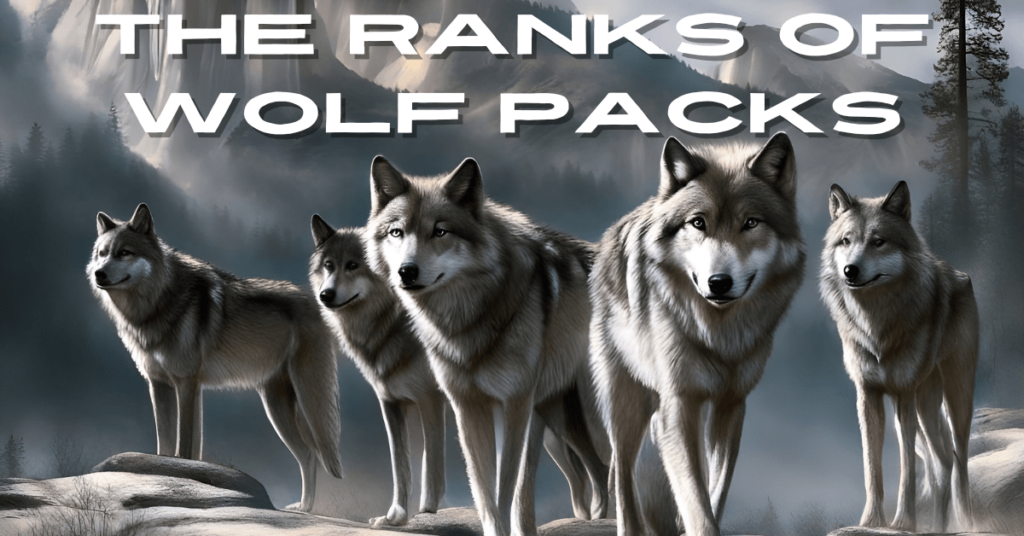1. Introduction
Wolves have long captured human imagination with their majestic presence and complex behaviors. Known for their intelligence, strong social bonds, and disciplined nature, these apex predators are much more than just symbols of wild strength. The personality traits of wolves extend beyond mere survival instincts; they reveal a rich tapestry of behaviors and social structures that define their existence.
In this article, we will explore 10 remarkable traits that illustrate the multifaceted nature of wolves. From their unwavering loyalty to their intricate social order, these traits not only highlight their significance in the animal kingdom but also reflect their deep influence on human culture and mythology. By delving into these characteristics, we gain a greater appreciation for the intricate dynamics that govern wolf behavior and the essential roles they play in their ecosystems.
Animal Information Table:
| Common Name | Wolf |
| Scientific Name | Canis lupus (for Gray Wolf), Canis rufus (for Red Wolf), Canis simensis (for Ethiopian Wolf) |
| Family Name | Canidae |
| Type | Mammal |
| Size | Head and body length: 75-160 cm (30-63 inches); Tail length: 30-50 cm (12-20 inches) |
| Weight | 15-50 kg (33-110 lbs) |
| Size Relative to a 6-Ft Human | Varies by species; generally similar to a large dog |
| Diet | Carnivore (primarily ungulates, small mammals, or rodents depending on species) |
| Average Lifespan in the Wild | 6-10 years |
| Habitat | Forests, grasslands, tundras, and some deserts depending on species |
| Group Name | Pack |
| Found In | North America, Europe, Asia, the Middle East, and Africa (depending on species) |
| Conservation Status | Varies by species; generally Least Concern, with some species like the Red Wolf being Critically Endangered |
Wolves belong to the Canidae family. Check out the List of all Canidae Family Animals.
2. Personality Traits of Wolves
Exploring the personality traits of wolves reveals their complex social structures and strong pack bonds. Each trait plays a vital role in defining how they interact with their environment and each other. In this section, we delve into the first trait: loyalty.
2.1 Wolf Loyalty
Loyalty is a cornerstone of wolf behavior, profoundly influencing their interactions within the pack. Wolves exhibit a remarkable level of dedication to their pack, demonstrating a strong sense of unity and responsibility. This loyalty manifests in several critical ways.

Explanation:
Wolves are deeply loyal to their pack members, a trait that ensures the cohesion and stability of the group. This loyalty is evident in their cooperative behaviors and mutual support, which are essential for the pack’s survival.
A prime example of wolf loyalty is that they are among the few Animals That Mate for Life.
Examples:
- Protection of Pack Members: Wolves display exceptional loyalty when it comes to safeguarding their pack. In times of danger, wolves will risk their lives to protect injured or vulnerable members. This protective instinct helps maintain the pack’s overall strength and functionality.
- Cooperative Hunting: Loyalty is also apparent in how wolves work together during hunts. Pack members coordinate their efforts, using strategic plans and communication to bring down prey. This cooperation ensures that all members, including the young and the old, receive nourishment and contribute to the pack’s success.
By showcasing such unwavering loyalty, wolves maintain a strong and effective social structure that is critical for their survival and thriving in the wild.
2.2 Discipline
Discipline is a defining trait of wolf behavior, essential for maintaining the structure and efficiency of the pack. This trait is particularly evident in their hunting techniques and social interactions.
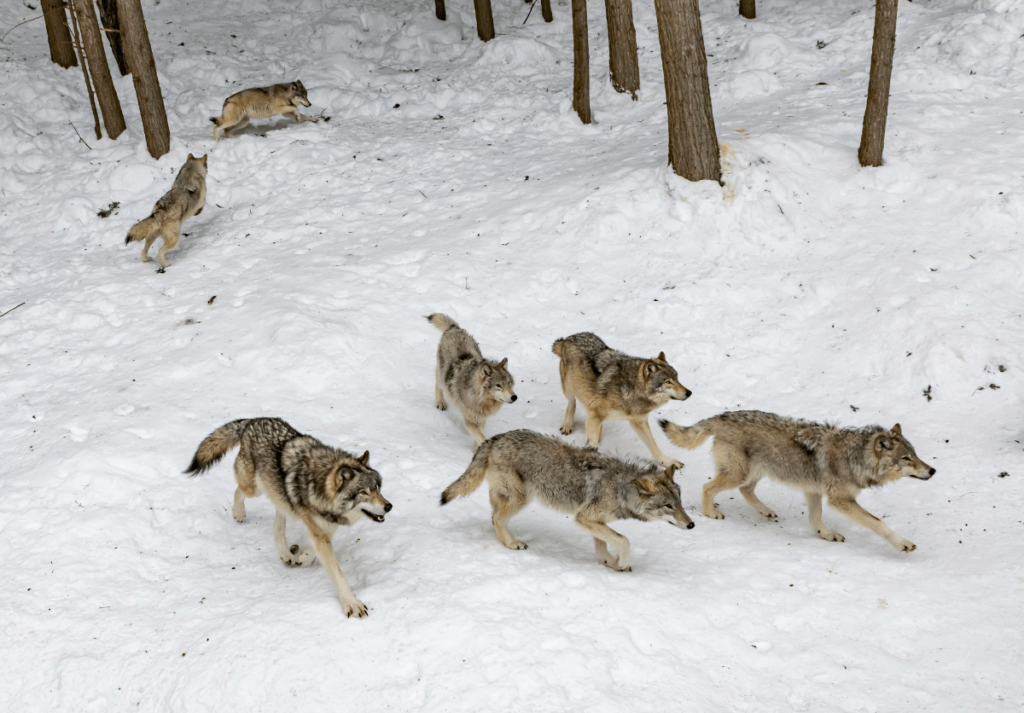
Explanation:
Wolves exhibit remarkable discipline through their structured approach to various activities. Their disciplined behavior is crucial for executing complex tasks, such as hunting and maintaining social order within the pack. This trait ensures that every member of the pack contributes effectively to the group’s overall well-being and success.
Examples:
- Hunting Techniques: Wolves employ highly disciplined strategies during hunts. They use coordinated efforts and follow a well-organized plan, often involving roles such as flankers and chasers. This strategic approach enhances their chances of a successful hunt, demonstrating how discipline contributes to the pack’s survival. Each wolf adheres to its role, ensuring that the hunt is carried out efficiently and effectively.
- Social Interactions: Within the pack, discipline is vital for maintaining social order. Wolves follow established hierarchies, with each member understanding its role and responsibilities. This disciplined structure helps prevent conflicts and ensures that the pack functions smoothly. For example, the alpha wolves lead and make decisions, while other members respect their authority and contribute to pack activities according to their rank.
Through Wolves disciplined behavior, they create a cohesive and efficient group dynamic, which is fundamental to their survival and success in the wild. The personality traits of wolves, such as loyalty and discipline, play a crucial role in their survival and success.
2.3 Social Order
The social order within a wolf pack is a complex and well-defined hierarchical structure that is essential for maintaining stability and ensuring the pack’s survival. Understanding this hierarchy provides insight into how wolves interact and cooperate within their group.
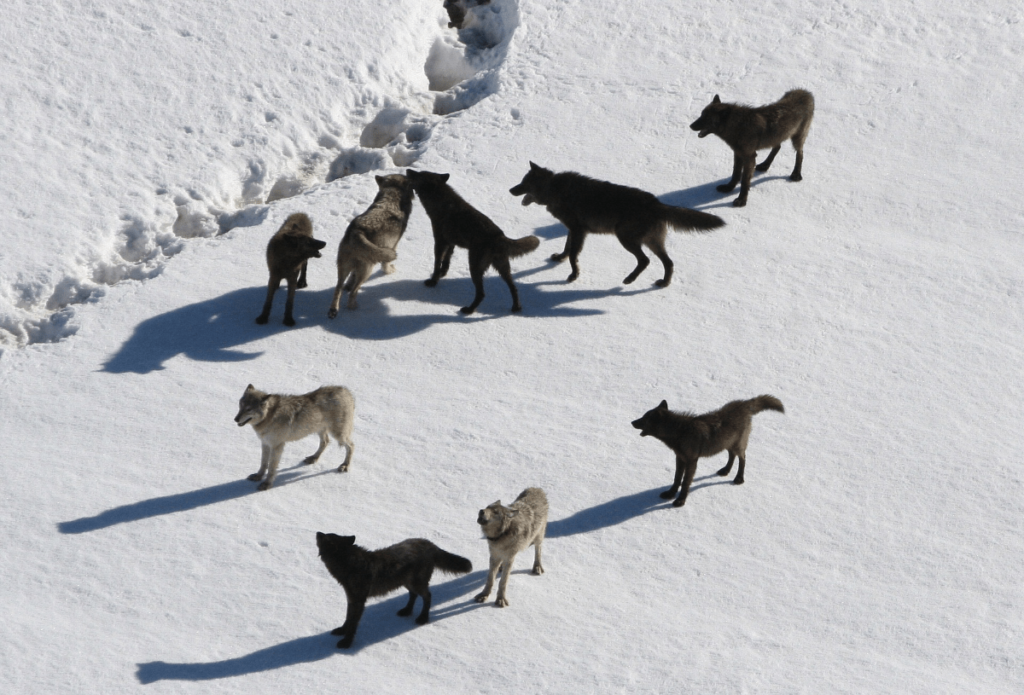
Explanation:
A wolf pack operates under a clear hierarchy, which is crucial for managing social interactions and maintaining order. This structure is typically divided into several roles, including the alpha, beta, and omega wolves, each contributing to the pack’s dynamics.
We’ve explored the Ranks of Wolf Pack (Alpha, Beta, Omega) in detail in a separate article. Feel free to check it out.
Importance:
The hierarchical social order of a wolf pack is fundamental for its stability and survival. By having a clear structure, wolves minimize conflicts and ensure that each member understands its role and responsibilities.
2.4 Communication Skills
Wolves possess a sophisticated communication system that is integral to their survival and social structure. Their ability to convey information through various methods allows them to coordinate activities, maintain pack cohesion, and navigate their environment effectively.

Explanation:
Wolves use a combination of vocalizations, body language, and scent marking to communicate with one another. Each method plays a distinct role in their interactions, enabling them to convey different types of information and emotions.
- Vocalizations: Wolves have a diverse range of vocal sounds, including howls, barks, growls, and whines. Howling is perhaps the most iconic vocalization, used to assemble pack members, signal territory boundaries, or coordinate group activities. For instance, during a hunt, wolves may use howls to communicate their positions and synchronize their efforts. Growls and barks are often used during conflicts or to assert dominance, while whines can signal submission or distress.
- Body Language: Non-verbal communication is crucial in wolf interactions. Body language includes tail positions, ear movements, and facial expressions. For example, a wolf with its tail lowered and ears back is typically signaling submission or deference to a higher-ranking pack member. Conversely, a dominant wolf may display an upright tail and forward ears to assert authority. Understanding these subtle cues helps wolves navigate their social hierarchy and resolve conflicts.
- Scent Marking: Scent marking is an essential method for wolves to communicate with each other and with other packs. Wolves use scent glands located in their paws, tails, and anal regions to mark their territory. By depositing scent at specific locations, wolves signal their presence and establish territorial boundaries. This behavior helps prevent encroachments from other packs and reduces the likelihood of direct confrontations. Scent marking also conveys information about the pack’s identity and reproductive status.
Examples:
- Coordinating Hunts: During a hunt, wolves use vocalizations to relay information about prey location and coordinate their movements. For instance, a wolf may use a specific howl to signal that it has spotted prey, prompting the rest of the pack to position themselves strategically.
- Maintaining Pack Cohesion: Body language plays a crucial role in maintaining harmony within the pack. Wolves use friendly gestures, such as licking and nuzzling, to reinforce social bonds and reduce tension. These behaviors help ensure that the pack remains united and cooperative.
Through these complex communication skills, wolves effectively manage their social structure, coordinate activities, and maintain their role within the ecosystem.
2.5 Intelligence
Wolves are renowned not just for their physical prowess but also for their remarkable cognitive abilities. Their intelligence plays a crucial role in their adaptability and problem-solving skills, which are essential for survival in the wild.
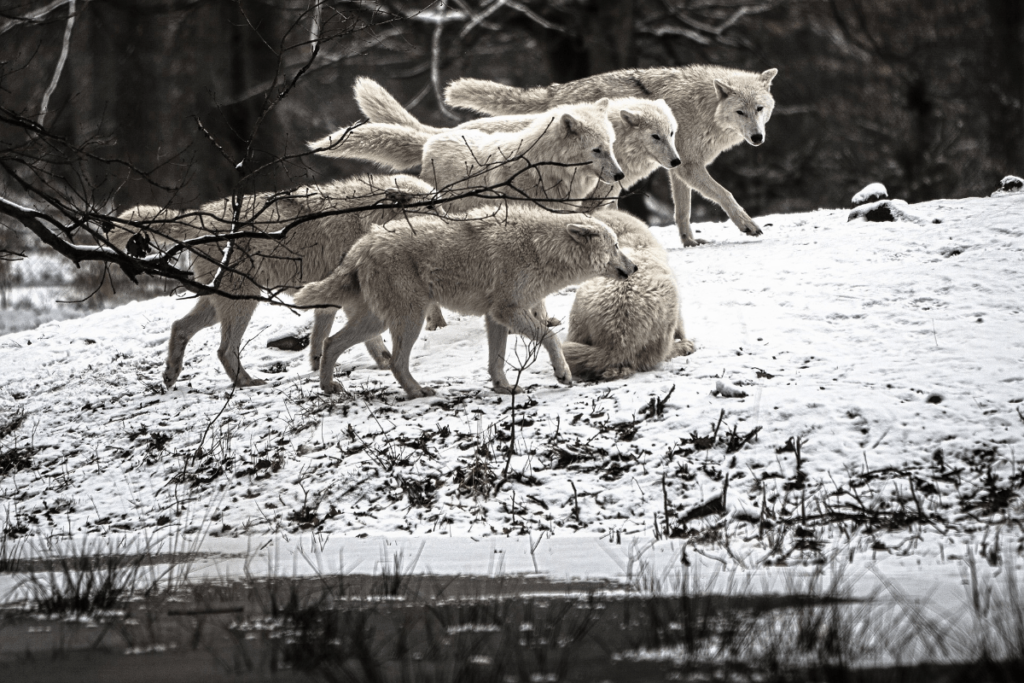
Explanation:
Wolves demonstrate a high level of intelligence through their problem-solving abilities and adaptability. This cognitive prowess enables them to navigate complex environments, devise effective hunting strategies, and interact efficiently with their pack members. Their intelligence is a key factor in their success as apex predators and social animals.
Examples:
- Problem-Solving Skills: Wolves exhibit impressive problem-solving skills when faced with challenges. For instance, researchers have observed wolves using sophisticated tactics during hunts. In some cases, wolves have been seen employing diversionary tactics to confuse prey. They might send a few members to drive the prey in one direction while others ambush from the other side. This strategic approach showcases their ability to think critically and adapt their methods based on the situation.
- Adaptability: Wolves are highly adaptable creatures, capable of thriving in diverse environments. Their intelligence allows them to adjust their behavior according to changing conditions. For example, in regions where prey is scarce, wolves may alter their hunting strategies or shift their diet to include smaller animals or even scavenging. This adaptability ensures their survival across various habitats, from dense forests to arid deserts.
- Tool Use: While not as common as in some other species, there are documented instances of wolves using objects in their environment to their advantage. For example, wolves have been observed using rocks to dig or manipulate objects. This demonstrates their ability to use external tools and adapt their behavior to meet their needs.
- Social Learning: Wolves are also known for their ability to learn from one another. Young wolves often learn essential skills by observing older pack members. This social learning process is crucial for passing on knowledge and ensuring that the pack remains effective in its activities, such as hunting and territory defense.
Through their cognitive abilities, wolves exemplify a level of intelligence that enhances their adaptability and problem-solving skills, contributing significantly to their success as both predators and social animals.
2.6 Teamwork
Teamwork is a fundamental aspect of wolf behavior, underpinning their success in both hunting and raising pups. The cooperative nature of wolves ensures that the pack functions effectively as a unit, with each member contributing to the group’s overall success.
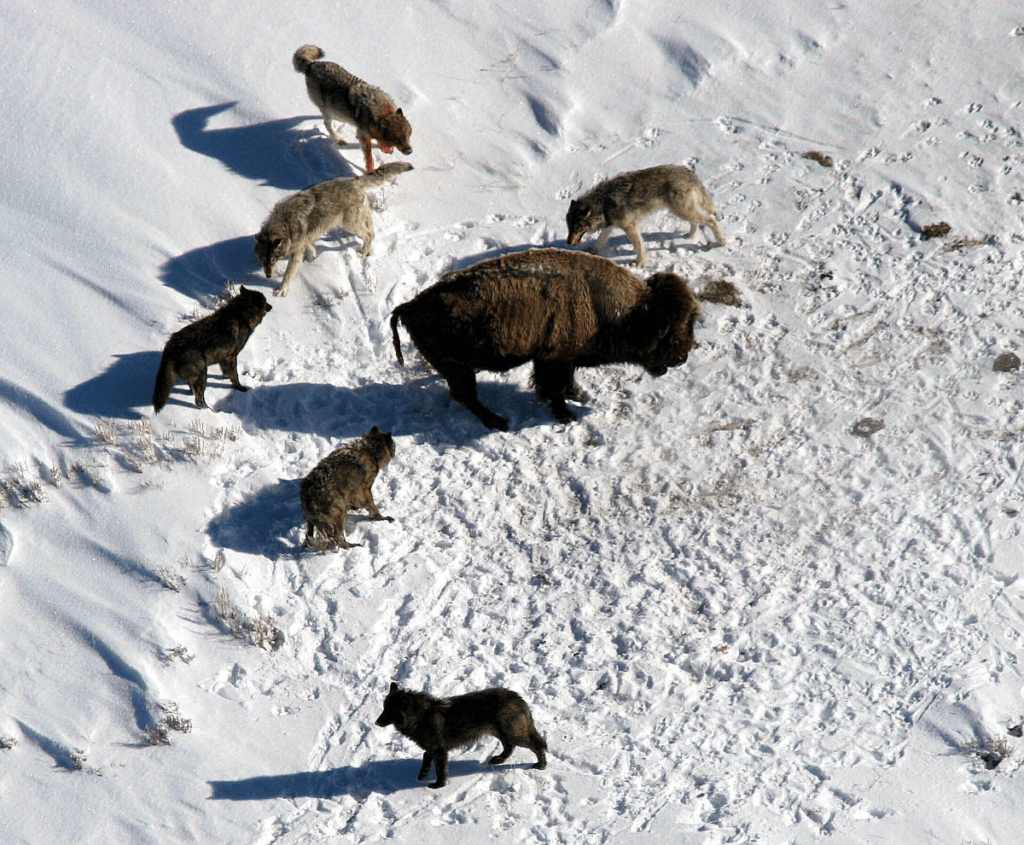
Explanation:
Wolves are highly social animals that rely on teamwork to achieve their goals. This cooperative behavior is essential for executing complex tasks and maintaining the pack’s cohesion. Teamwork among wolves involves coordinated efforts, mutual support, and shared responsibilities, all of which are crucial for their survival and reproductive success.
Examples:
- Hunting: One of the most striking examples of teamwork in wolves is their hunting strategy. Wolves often hunt in packs, employing coordinated tactics to bring down prey. Each member of the pack plays a specific role, such as driving the prey, flanking, or making the final kill. This organized approach maximizes their chances of a successful hunt. For example, while some wolves may chase the prey to tire it out, others position themselves strategically to intercept or corner it. This collaborative effort ensures that the pack can hunt effectively, even when targeting large or elusive prey.
- Raising Pups: Teamwork is also evident in the way wolves raise their young. In a wolf pack, all members contribute to the care and upbringing of the pups. While the alpha pair is primarily responsible for breeding and nurturing the young, other pack members, including older siblings and helpers, assist in feeding, protecting, and teaching the pups. This communal effort helps ensure that the pups receive the care and support they need to grow and learn essential skills for survival. For instance, older wolves may bring food to the den and help guard it from potential threats, while younger wolves learn hunting techniques through observation and practice.
- Territory Defense: Wolves also rely on teamwork to defend their territory from intruding packs or predators. Pack members work together to patrol the boundaries, mark their territory with scent, and engage in defensive behaviors if necessary. This collective effort helps maintain their territory and ensures that resources are protected for the pack’s use.
The cooperative nature of wolves exemplifies how teamwork is integral to their survival and success. By working together, wolves enhance their hunting efficiency, support the next generation, and safeguard their territory, demonstrating the power of collective effort in achieving shared goals. The diverse personality traits of wolves, including their intelligence and teamwork, are essential for their adaptability in various environments
2.7 Resilience
Resilience is a defining trait of wolves, enabling them to endure and thrive despite facing numerous challenges. This adaptability is crucial for their survival in harsh environments and during encounters with rival packs.

Explanation:
Wolves exhibit resilience through their ability to adapt to adverse conditions and overcome obstacles. Their resilience is reflected in their behaviors and strategies for dealing with environmental challenges, competition, and other threats. This trait allows them to maintain their position as apex predators and sustain their pack’s well-being in the face of adversity.
Examples:
- Harsh Environments: Wolves are known for their ability to thrive in a variety of harsh environments, from the icy tundras of the Arctic to the arid deserts of the Southwest. Their thick fur provides insulation against cold temperatures, while their efficient hunting techniques enable them to find food even in challenging conditions. For instance, in the winter, wolves have been observed traveling long distances in search of prey, displaying remarkable endurance and adaptability to survive in extreme cold.
- Rival Packs: In territories where rival packs pose a threat, wolves demonstrate resilience through strategic behaviors and territorial defense. They use scent marking to establish boundaries and communicate their presence to other packs. When conflicts arise, wolves may engage in confrontations to protect their territory, but they also employ non-lethal methods to avoid unnecessary battles. Their ability to navigate these social challenges and defend their territory highlights their resilience and strategic thinking.
- Food Scarcity: During periods of food scarcity, wolves adapt their diet and hunting strategies to meet their needs. They may shift their focus to smaller prey or scavenge from other predators. Additionally, wolves have been observed altering their hunting patterns based on the availability of prey, demonstrating their flexibility and resourcefulness in responding to changing conditions.
- Injury and Illness: Wolves also show resilience when dealing with injuries or illness. Injured wolves can often continue to participate in pack activities and adapt their roles to accommodate their condition. For example, a wounded wolf may take on less physically demanding tasks while recovering, relying on the support of pack members to maintain their role within the group.
Wolves’ resilience is a testament to their adaptability and strength, enabling them to navigate the challenges of their environment and sustain their pack’s survival.
2.8 Territoriality
Territoriality is a critical aspect of wolf behavior, playing a fundamental role in their social structure and survival. Establishing and defending territory ensures that wolves have access to necessary resources and maintain their position within the ecosystem.
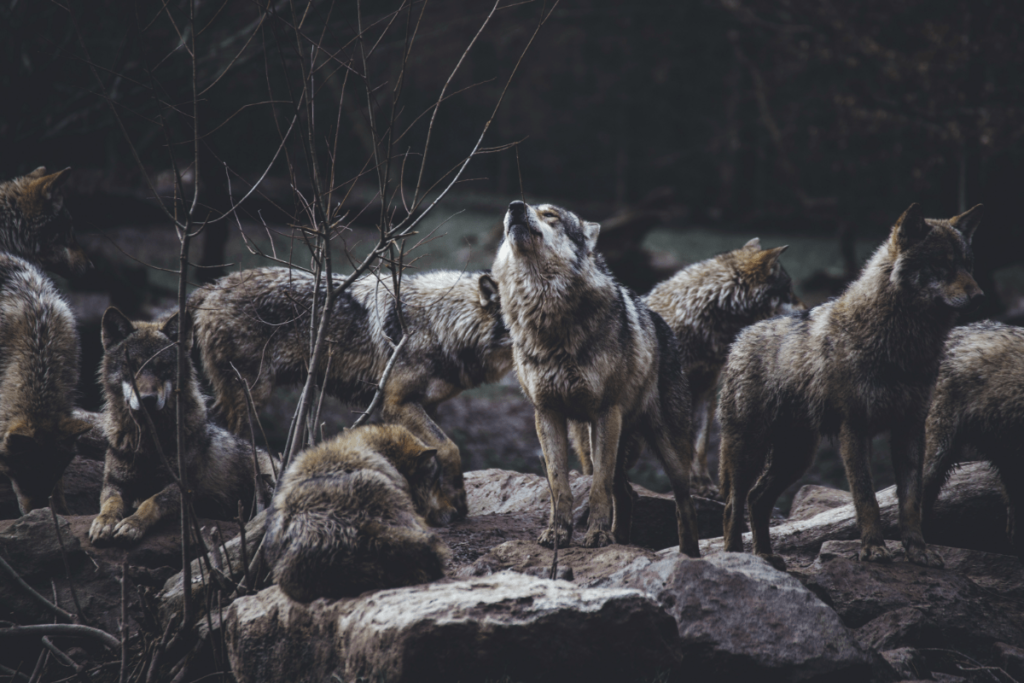
Explanation:
For wolves, territory is not just a physical space but a vital component of their survival strategy. It provides a secure area for hunting, breeding, and raising pups, free from the competition of other packs. Territoriality helps to minimize conflicts over resources and supports the stability of the pack.
Examples:
- Marking Territory: Wolves use a combination of scent marking and vocalizations to establish and communicate their territorial boundaries. They mark their territory by depositing scent from glands located in their paws, tail, and anal region. By urinating and defecating in specific areas, wolves create a scent boundary that signals their presence to other packs. This scent marking serves as a warning to intruding packs and helps prevent direct confrontations by clearly defining the limits of their territory.
- Vocalizations: Howling is a key component of wolves’ territorial behavior. By vocalizing, wolves can broadcast their presence and reinforce their territorial claims over long distances. Howls serve multiple purposes, including rallying pack members and deterring rival packs from encroaching on their territory. This vocal communication helps maintain territorial boundaries and coordinates pack activities.
- Defending Territory: When rival packs or predators encroach on their territory, wolves exhibit aggressive behaviors to defend their space. This can include direct confrontations, displays of dominance, and coordinated group efforts to drive away intruders. In some cases, wolves will engage in physical altercations to assert their dominance and protect their resources. However, they often prefer to avoid unnecessary conflicts, relying on their scent markings and vocal warnings to deter potential threats.
- Territorial Patrols: Wolves regularly patrol their territory to monitor for any signs of intrusion or changes. This involves traveling along the perimeter of their territory, checking scent marks, and responding to any potential threats. These patrols help to ensure that their territorial boundaries remain intact and that they can address any challenges promptly.
The significance of territoriality for wolves extends beyond mere survival; it is integral to their social organization and reproductive success. By maintaining and defending their territory, wolves ensure access to essential resources and reduce the risk of conflicts with other packs.
2.9 Nurturing Instincts
Nurturing instincts are a vital aspect of wolf behavior, showcasing their deep care and investment in the well-being of their pack members. This nurturing behavior is particularly evident in their interactions with pups and other members of the pack.
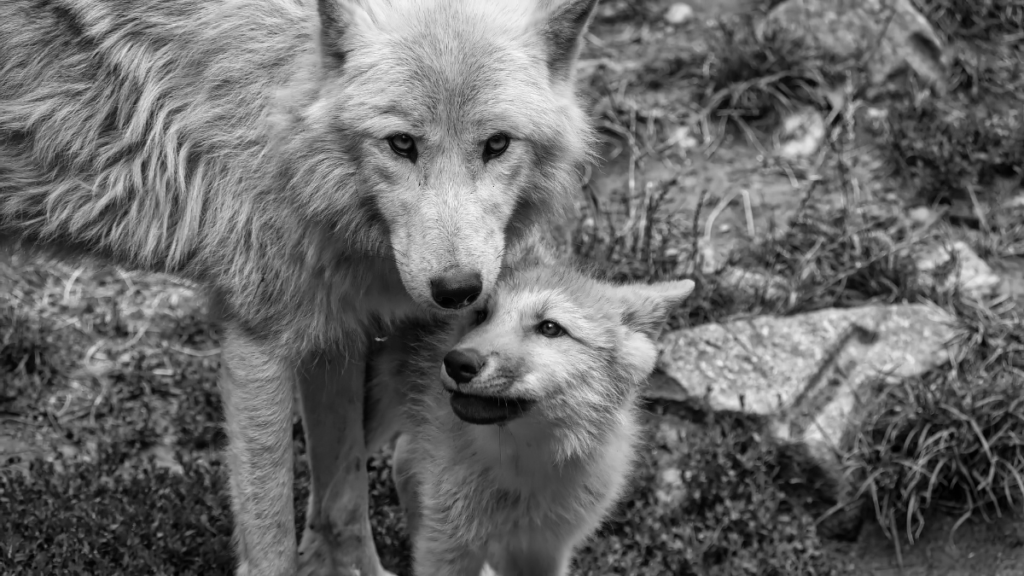
Explanation:
Wolves demonstrate strong nurturing instincts through their attentive care and support for both their young and their pack members. These instincts ensure the survival and health of the pack, reinforcing social bonds and fostering a cooperative environment.
Examples:
- Care for Pups: One of the most striking examples of nurturing behavior in wolves is their care for pups. The alpha pair, particularly the alpha female, takes on the primary role of nurturing and protecting the young. They provide food, warmth, and protection to the pups during their early development. The entire pack participates in raising the pups, with older siblings and other pack members helping to feed, guard, and teach them essential skills. This communal care helps ensure that the pups grow up healthy and well-prepared for their future roles within the pack.
- Feeding and Protection: Wolves show nurturing instincts through their feeding practices. Adult wolves regurgitate food for the pups, providing them with the necessary nourishment during the early weeks of life. This behavior not only supports the pups’ growth but also reinforces the social bonds within the pack. Additionally, wolves are vigilant in protecting their pack members from potential threats. They work together to defend the den site from predators and rival packs, ensuring the safety and security of the entire group.
- Teaching and Socialization: As pups grow, the pack’s nurturing behavior extends to teaching them survival skills and social behaviors. Older wolves play a crucial role in socializing the young, showing them how to hunt, interact with other pack members, and navigate their environment. This education is essential for the pups to become effective contributors to the pack and ensure their continued success.
- Support During Illness or Injury: Nurturing behavior is also evident when pack members are ill or injured. Wolves provide support and care to those in need, often adapting their roles to assist affected individuals. For example, injured wolves may be helped by their packmates through protective behaviors or by providing food, highlighting the pack’s collective commitment to each other’s well-being.
Wolves’ nurturing instincts reflect their deep social bonds and commitment to the pack’s overall health and cohesion. By caring for their young and supporting one another, wolves enhance their chances of survival and success as a group.
The Gray Wolves were once listed as an endangered species, but thanks to the efforts of conservation groups like the Defenders of Wildlife and the U.S. Fish and Wildlife Service, they are no longer considered endangered.
The status of animal populations continually shifts due to conservation efforts and climate changes. While some species increase in number, others may decline and approach extinction. Here is an article that provides an overview of how endangered species status can change.
2.10 Courage
Courage is a defining trait of wolves, reflecting their fearless nature in defending their pack and territory. This bravery is essential for their survival, especially when facing threats from rival packs, predators, or harsh environmental conditions.
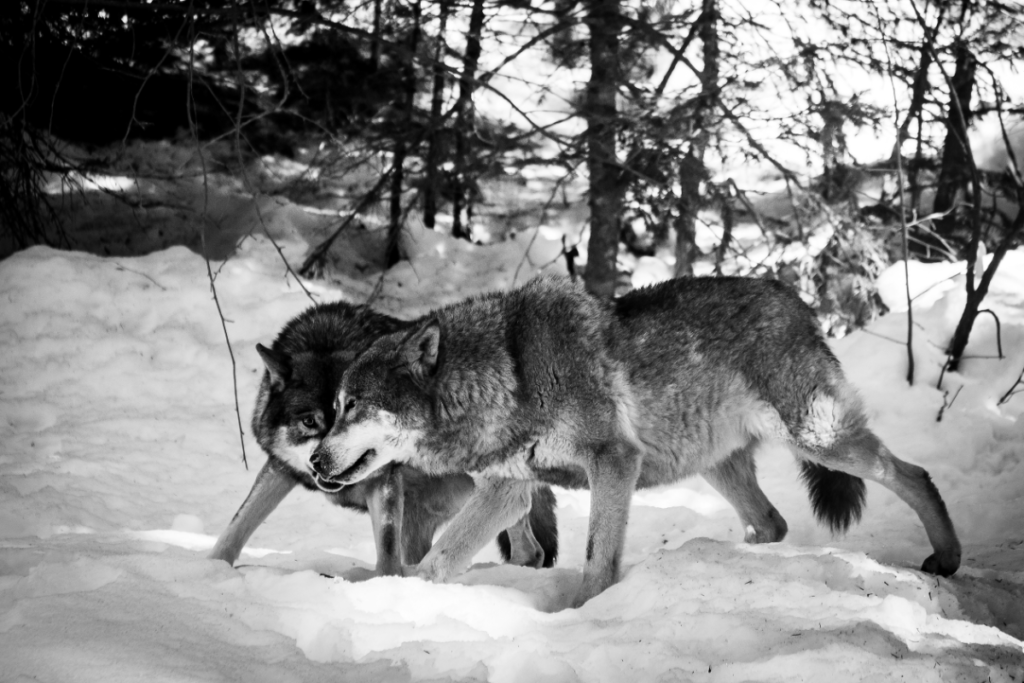
Explanation:
Wolves exhibit courage through their bold actions and willingness to confront dangers in order to protect their pack and maintain their territory. This fearless behavior is crucial for their role as apex predators and for ensuring the safety and stability of their social structure.
Examples:
- Defending the Pack: Wolves demonstrate remarkable courage when defending their pack from threats. When a rival pack encroaches on their territory or poses a threat, wolves will engage in aggressive confrontations to protect their family and resources. For instance, during territorial disputes, wolves may face off against larger or stronger opponents, risking injury to ensure that their pack’s territory remains secure. This courage is particularly evident during intense battles where wolves show determination and resilience in the face of danger.
- Protecting Pups: The courage of wolves is also evident in their behavior towards their young. Adult wolves, particularly the alpha pair, will go to great lengths to protect their pups from potential predators or threats. For example, if a predator approaches the den site, wolves will bravely confront the intruder, often risking their own safety to ensure the safety of the pups. This protective instinct highlights their bravery and dedication to the well-being of their offspring.
- Facing Environmental Challenges: Wolves also display courage when confronting harsh environmental conditions. In regions with extreme weather, such as the Arctic tundra, wolves must navigate treacherous terrain and endure freezing temperatures. Their ability to persist and continue hunting despite these challenges showcases their resilience and courage. For example, during severe snowstorms or blizzards, wolves may still venture out to hunt, demonstrating their determination and adaptability.
- Hunting Large Prey: Wolves exhibit courage when hunting large and potentially dangerous prey, such as moose or bison. These hunts require not only physical strength but also bravery, as wolves must confront and subdue animals that could cause serious harm. The coordinated efforts and fearless approach in these hunts exemplify their courage and tactical skill.
Wolves’ courage is integral to their survival and success. Their fearless nature in defending their pack, protecting their young, and facing environmental challenges underscores their role as formidable and resilient predators.
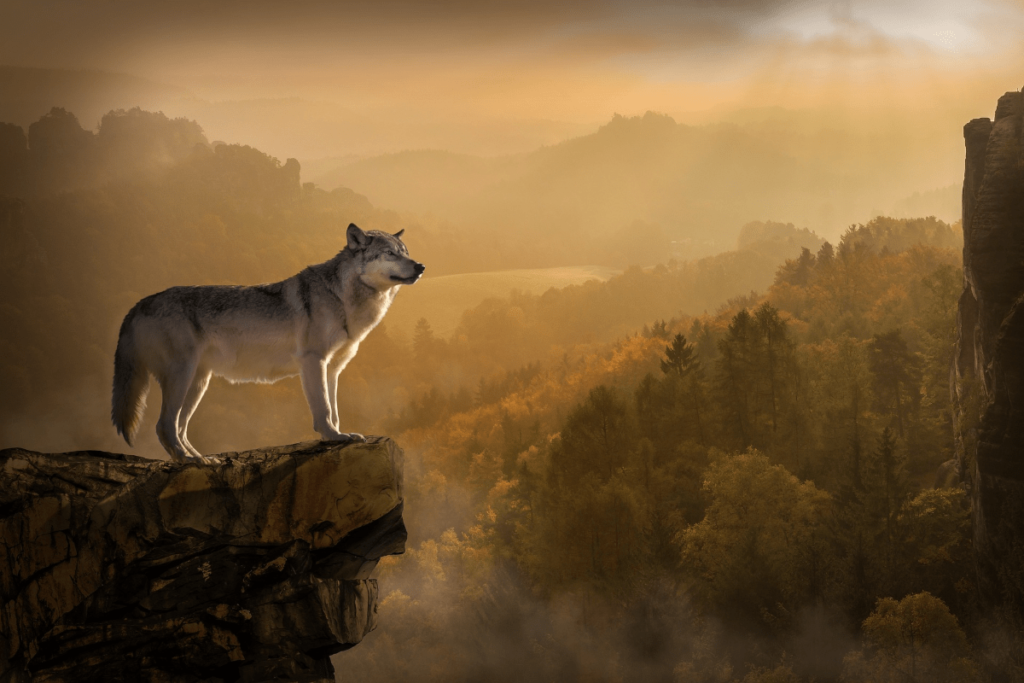
3. The Importance of These Traits in the Ecosystem
Wolves play a crucial role in maintaining ecological balance through their various personality traits. Their behaviors and characteristics significantly impact the environment and have also influenced human culture and mythology.
Role in the Environment:
Wolves are apex predators, meaning they sit at the top of the food chain and have a profound influence on their ecosystems. Their traits, such as teamwork, resilience, and territoriality, contribute to maintaining ecological balance in several ways:
- Predator-Prey Dynamics: Wolves help regulate prey populations, preventing overgrazing and promoting plant diversity. By hunting and controlling the numbers of herbivores like deer and elk, wolves prevent these populations from becoming too large and depleting vegetation. This regulation supports a balanced ecosystem where plant and animal species can thrive. For example, in Yellowstone National Park, the reintroduction of wolves led to a decrease in elk populations, which allowed willow and aspen trees to recover, demonstrating the wolves’ impact on vegetation and overall ecosystem health.
- Influence on Other Species: The presence of wolves affects the behavior and distribution of other wildlife species. For instance, the fear of predation by wolves can cause herbivores to alter their grazing patterns, avoiding areas that are more vulnerable to wolf attacks. This behavior can lead to the regeneration of vegetation in certain areas, supporting a diverse range of plant and animal life. Additionally, wolves’ scavenging activities, such as feeding on carrion, provide nourishment for other animals like ravens and foxes.
- Maintaining Ecosystem Balance: Through their roles as hunters, defenders, and caregivers, wolves contribute to the stability and health of their ecosystems. Their complex social structures and behaviors ensure that prey populations remain balanced, and their territoriality helps prevent overpopulation and habitat degradation.
Cultural Significance:
Wolves have held a prominent place in human culture, mythology, and literature, reflecting their impact on our understanding of the natural world and human imagination:
- Mythology and Folklore: In many cultures, wolves are symbols of strength, bravery, and loyalty. For example, in Norse mythology, the wolves Fenrir and Skoll are significant figures, representing powerful forces of nature. Similarly, Native American cultures often revere wolves as spirit animals or totems, embodying traits like courage and wisdom.
- Literature and Art: Wolves have inspired countless works of literature, art, and folklore. They appear in stories and fables as symbols of various human traits, such as the cunning wolf in Aesop’s fables or the noble and fierce wolves in fantasy novels. Their portrayal often reflects human qualities or societal values, influencing how we perceive these animals and their roles in our world.
- Conservation and Symbolism: In modern times, wolves have become symbols of wildlife conservation and the need to protect natural habitats. Their reintroduction into various ecosystems has highlighted the importance of preserving biodiversity and the complex interrelationships between species.
Wolves’ traits and behaviors are integral to their role in ecosystems and have left a lasting imprint on human culture and literature. Their influence extends beyond the natural world, shaping our cultural narratives and conservation efforts.
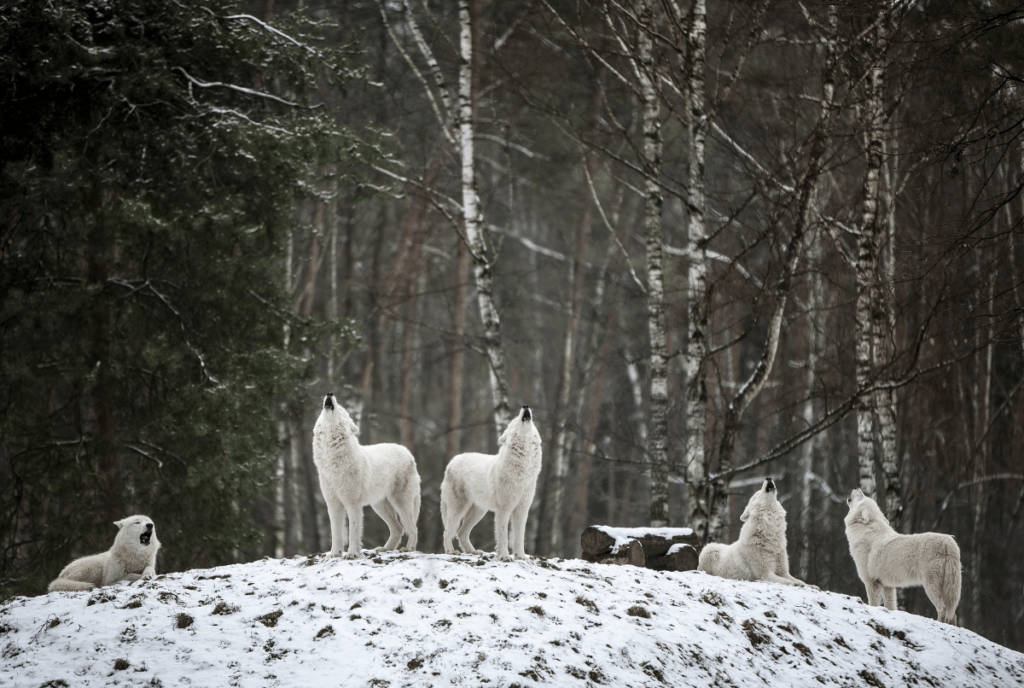
4. Conclusion
In exploring the remarkable personality traits of wolves, we gain a deeper understanding of these majestic creatures and their vital role in the natural world. Wolves are complex animals with behaviors that reflect their intelligence, strength, and social structure. Here’s a brief recap of the 10 key traits discussed:
- Loyalty: Wolves exhibit strong loyalty to their pack, showcasing protective behaviors and cooperative hunting.
- Discipline: Their disciplined nature is evident in their hunting techniques and social interactions within the pack.
- Social Order: The hierarchical structure of a wolf pack, including alpha, beta, and omega roles, maintains stability and survival.
- Communication Skills: Wolves use vocalizations, body language, and scent marking to coordinate and maintain pack cohesion.
- Intelligence: Their cognitive abilities, including problem-solving and adaptability, highlight their high intelligence.
- Teamwork: Wolves’ cooperative nature is crucial for successful hunting and raising pups.
- Resilience: They demonstrate resilience by adapting to harsh environments and overcoming challenges from rival packs.
- Territoriality: Wolves establish and defend their territory through scent marking and vocalizations, ensuring access to resources.
- Nurturing Instincts: They exhibit nurturing behaviors toward pups and pack members, ensuring their well-being and survival.
- Courage: Wolves display bravery in defending their pack, protecting their young, and facing environmental challenges.
Understanding the personality traits of wolves enhances our appreciation for them and underscores their importance in maintaining ecological balance. As apex predators, wolves play a critical role in their habitats, influencing both the environment and the dynamics of other species. Their complex behaviors and social structures are a testament to their adaptability and strength.
We encourage you to support wolf conservation efforts and advocate for the protection of their natural habitats. By appreciating the intricate personality traits of wolves and recognizing their significance, we can contribute to preserving these remarkable animals for future generations.
Thank you for joining us in exploring the world of wolves. Share this article to spread awareness and foster a deeper respect for these incredible creatures.


